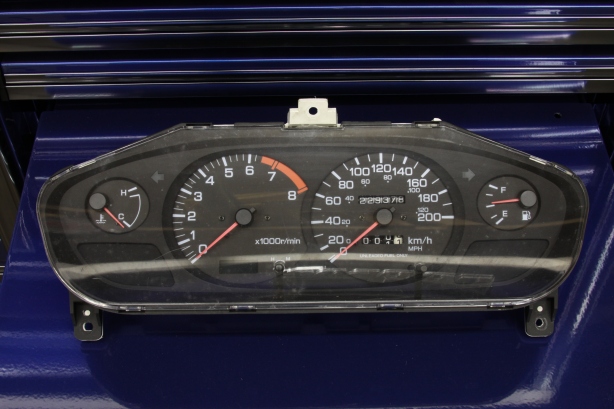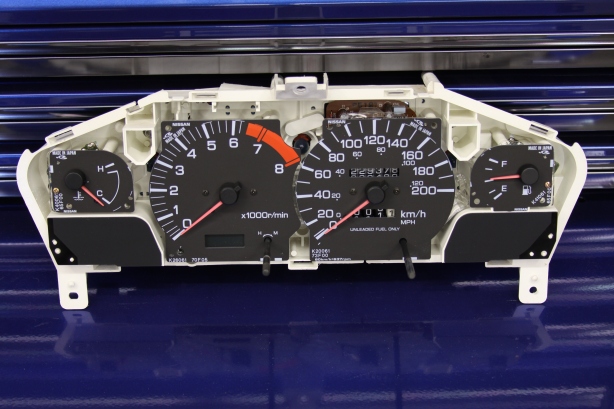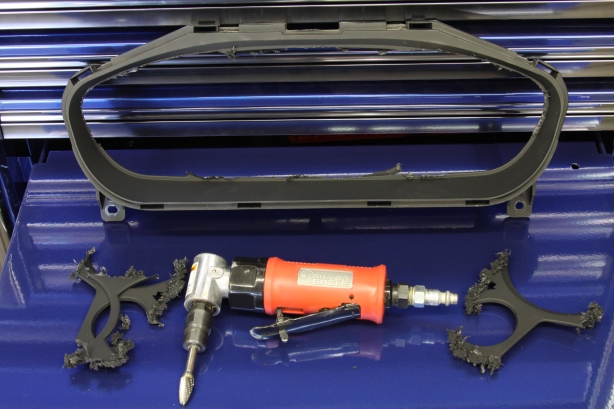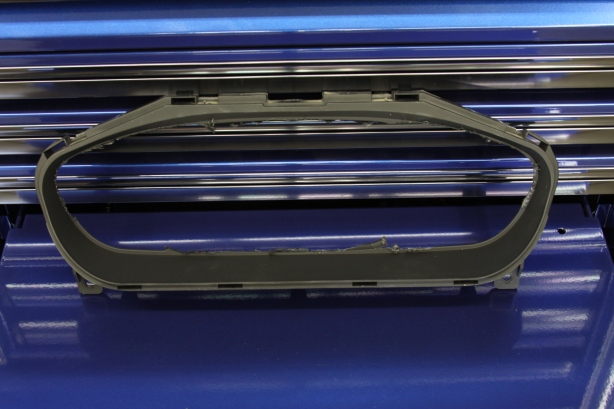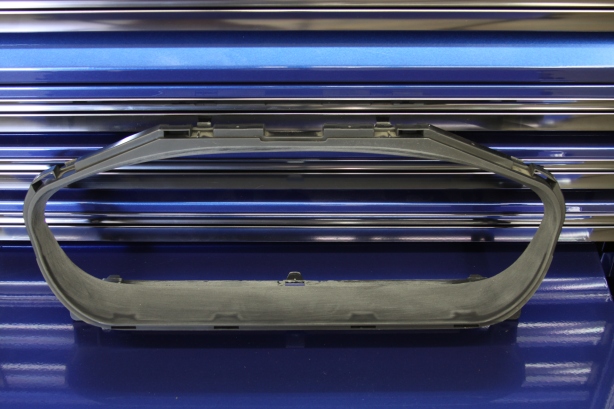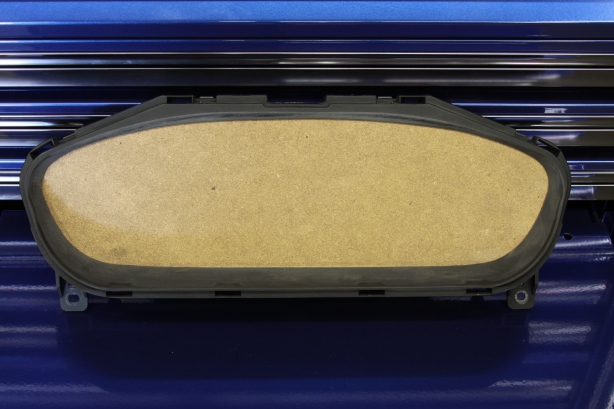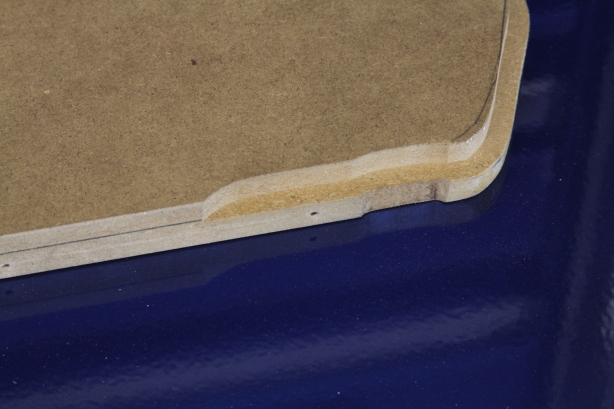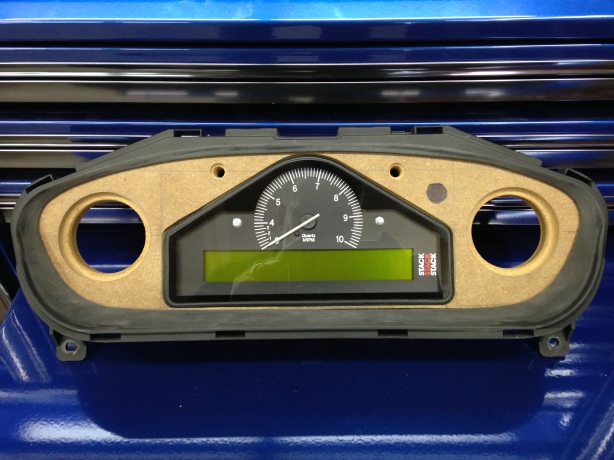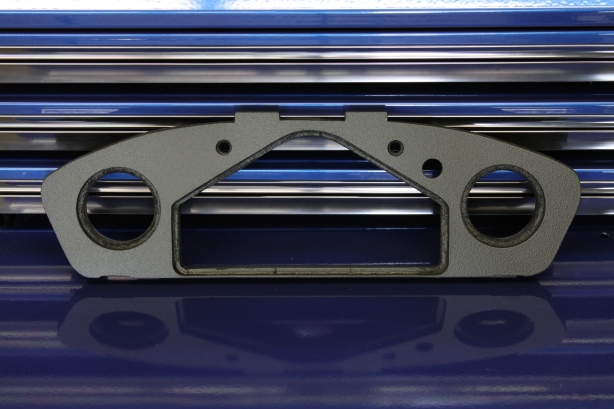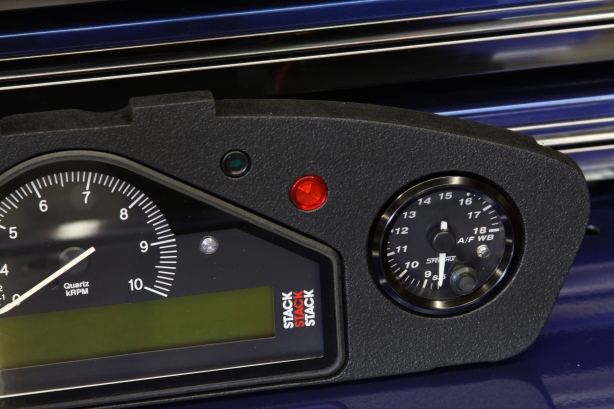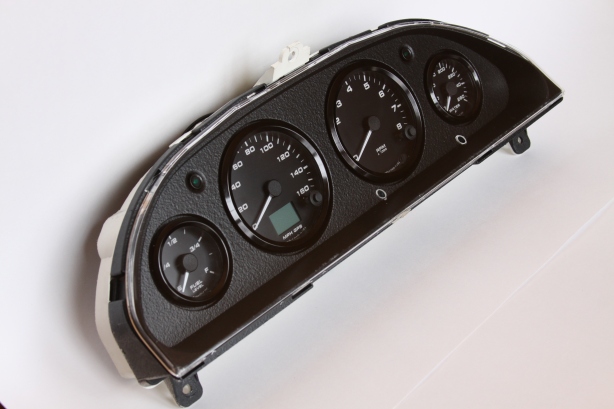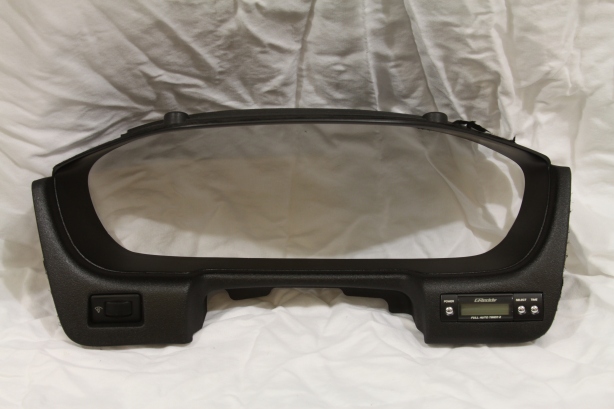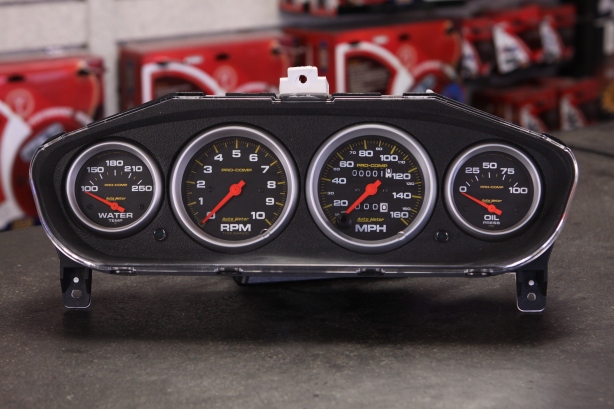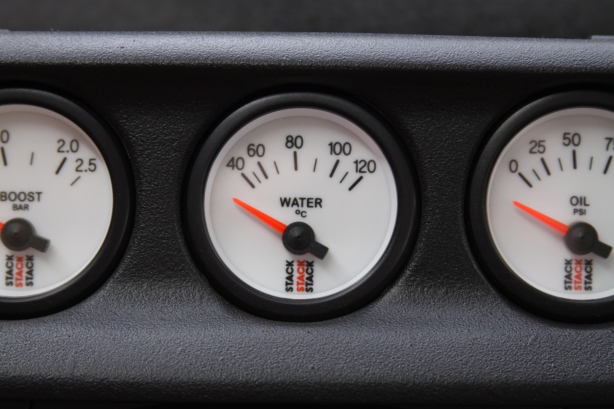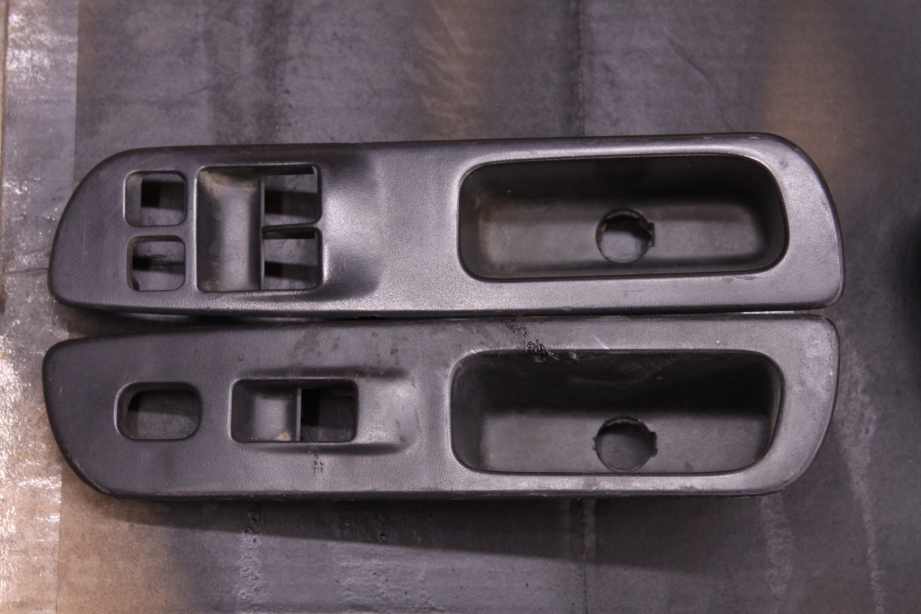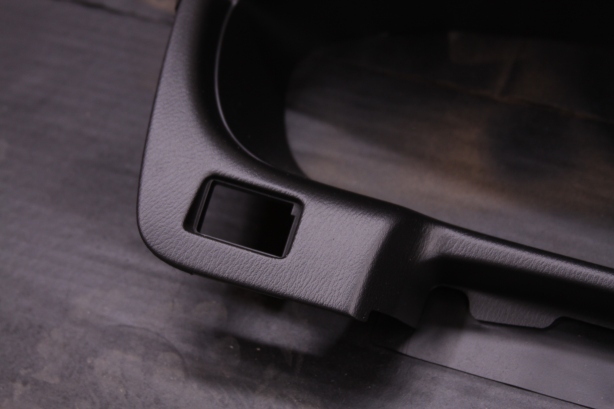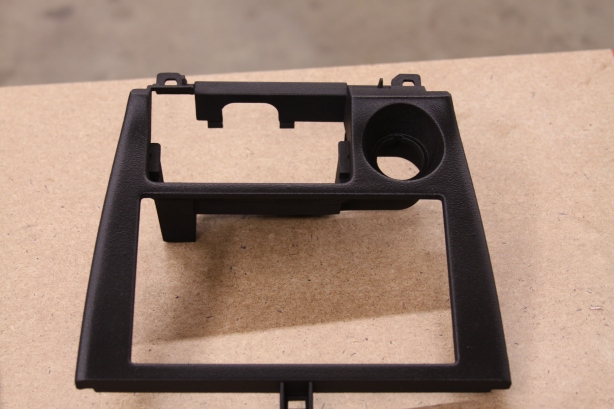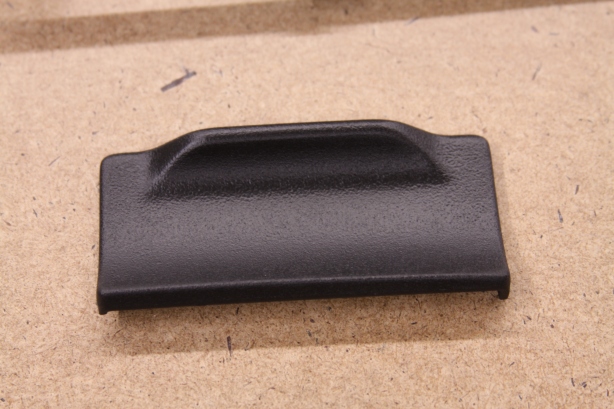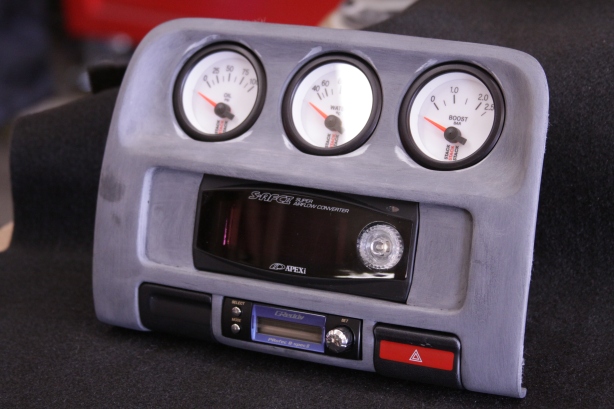Just another S14 cluster build… well, not so fast. This just isn’t any old customer. It’s Peter Tarach, editor in chief of Modified Magazine. Peter and I have known each other for several years now. I help him, he helps me… it’s a good relationship! So naturally when he asked about a cluster for his track S14 I was more than happy to oblige. However, this cluster wasn’t just going in the car, it was going to have its own little write-up in an issue of Modified Magazine. Now as I typed this a few months back, it appeared that Modified Magazine was going to be closing their doors… and they did. I’m not sure what that means for getting this cluster featured in maybe whatever magazine Peter works for next, but that’s not what it’s all about. It’s not even about the money. It’s about seeing how satisfied people are when they receive one of my products. It’s an honor for me to have one of my clusters or interior pieces residing in a customer’s dashboard. Whether they are a well known drifter, a 16-year old kid with his very first ride or in this case, Peter Tarach. So I wish the best of luck to Peter and his new ventures… along with the rest of the staff at Modified Magazine.
I guess it’s time to get down to business. The first thing I ask any potential cluster customer is what they want in it. I have to make sure everything is going to fit comfortably. I refuse to cram things in. It has to look natural with an adequate amount of spacing between gauges. In this case Peter already had a Stack race display that he wanted retrofitted into the cluster. “Cool” I said, those things are sick and have an ultra-clean style to them. He also wanted his 45mm Omori boost gauge and 52mm AEM wideband mounted in there. Naturally this threw up a red flag for me. Not only were the gauges different brands, but they were different sizes. This really “gets my goat”. So I politely suggested to him that we ditch those two gauges and replace them with a couple Speedhut gauges. After all, this is going to be in Modified Magazine. I can’t have a mish mosh of equipment floating around in there, LOL. I suggested Speedhut for a couple reasons. For one, I’m a Speedhut dealer and am very familiar with them. I could just order them up and he would not need to worry about it. I wanted to make it as easy as possible for him since I just told the guy that I didn’t really want to use the gauges he just sent me. Second of all, Speedhut gauges are completely customizable. Which meant I could match the look and illumination of the Stack display. Peter, being the good guy that he is, agreed to all of this. Not to mention that Speedhut was kind enough to hook us up on the gauges in exchange for the obvious exposure they would receive in the magazine article. Now that we were set on the equipment, it was up to me to make it all come together inside of an S14 cluster.
In case you didn’t already know, I prefer to retrofit the aftermarket equipment into the OEM cluster housing. It ensures that the cluster will simply bolt back into the dashboard just like it came out. But most importantly, it maintains a nice OEM style with the flair of the aftermarket equipment inside of it. I also try to reuse the OEM cluster lens… I think it helps finish off the look. I offer an optional 7-step polishing process to restore the lens back to new. So first thing is to gut the OEM cluster housing. This is the cluster in stock form:
OEM lens removed. As you can see it’s in need of some love:
OEM cluster surround removed. This piece will need to get trimmed/gutted to perfection in order for this to all come together… more on that later:
Back half of the OEM cluster that houses the actual gauge faces, electronics and circuitry on the back:
Everything removed from the back half:
Now that disassembly is complete, it’s time to start modifying everything in order to accept the new gauge plate. I use a 3/4″ piece of MDF for the plate. This allows me plenty of thickness to flush the gauges… which I feel gives a much more finished look over simply surface mounting them. The OEM cluster surround needs to be opened up to remove the horizontal flat section where the OEM gauge faces use to reside. This means grinding/sanding perfectly right up the surround wall. It also needs to be perfect on the backside so the new gauge plate butts right up against it without any gaps or weird undulations.
My tool of choice when modify virtually any plastic is a die-grinder. I use a burr type bit to rough cut the majority of the plastic away:
Next I use a 1-1/2″ drum sander on the die-grinder to rough sand it down to match the exact contour of the interior wall of the cluster surround:
Close-up of the precision sanding:
Next up is to modify the back half of the cluster. Not only will this allow the new aftermarket gauges to physically fit, but it also serves to “sandwich” the new gauge plate between it and the front cluster surround. First thing is to grind all of the nubs and high spots off the back of it:
Grinding off the extra plastic on the back allows me to easily run it through my scroll saw. The saw is used to rough-cut away the horizontal flat section… thus leaving just the wall:
Next I use the same drum sander used earlier to finish off the rough spots. It doesn’t have to be perfect since it will never be seen, but there’s no need for it to look like a hack-job:
As discussed earlier, I use a 3/4″ thick piece of MDF for the main gauge plate:
It butts up against the back of the surround nice and flat since I took the time to make sure the surround was sanded carefully and true:
As seen in the image below, the 3/4″ thick gauge plate is far too thick for the back half of the cluster to snap back on. So I simply use a router to make a rabbet cut around the perimeter of the plate:
With the rear half of the cluster modified, it’s time to move on to the main plate. The Stack display is installer friendly in that it has a thin lip all the way around the perimeter for it to surface mount into a plate. However, I wanted to go one step further and flush mount it into the new gauge plate. First thing is getting it marked out. As you can see in the image below, I got lucky that it barely fits height wise within the S14 cluster surround:
The inner line gets cut out with a jig saw, then the flush portion is created again with a rabbet bit. However, the lower corners are too tight to use the rabbet bit. So I hand carved/shaped the flushed ledge in those areas:
As mentioned earlier, we agreed on the 52mm Speedhut Revolution series gauges to flank each side of the Stack display:
Also added in flush turn signal indicators and eventually a Stack shift light off to the right side:
I’m constantly test fitting things as I go… this is one of those times:
This after an initial coat of SEM Satin Black Chip Guard. It typically takes several coats to get a texture I’m satisfied with. I love this stuff!
After six coats and some dry time, I test fit everything to make sure I’m still on track:
Last thing on the list, before I can call this complete, is to polish the OEM lens. I start off with wet sanding the inside and outside with 1200, 1500 then finish with 2000 grit. I then polish the inside and outside with four stages of polish. This is after the wet sanding to get all of the deeper scratches out:
The finished product ready for service!
